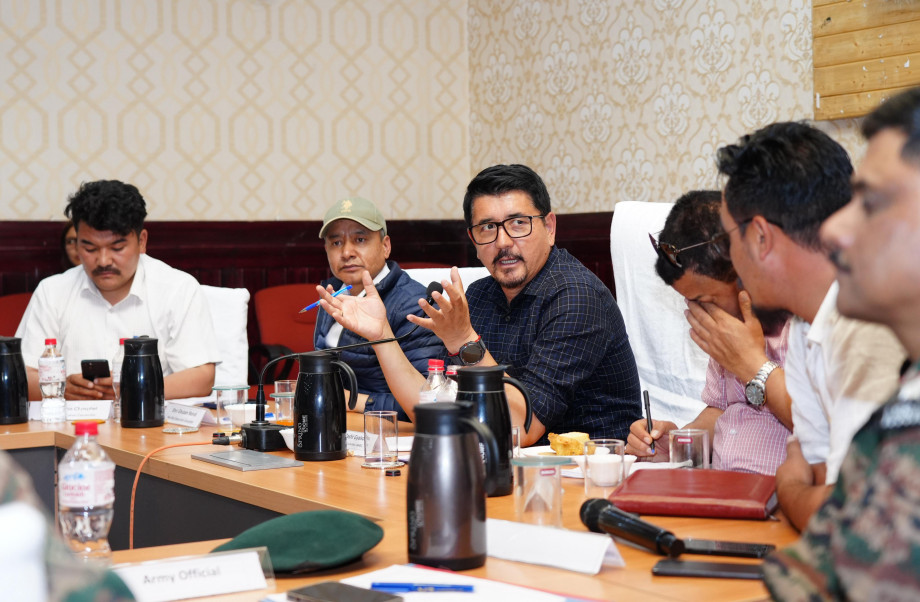Mission Indus clean-up launched: Stakeholders unite against pollution in river

In a strong and urgent call for action, Chairman/CEC of LAHDC Leh, Adv. Tashi Gyalson, chaired a high-level stakeholders' meeting on June 18 to kickstart a mission-mode clean-up campaign and enforce zero tolerance for waste dumping in and around the sacred Indus River.
Held at the Conference Hall of the DC Office, the meeting saw participation from EC Ghulam Mehdi, LoP Tsering Namgyal, and Councillors Lobzang Sherab, Stanzin Chosfail, Tundup Norbu, Dr. Morup Dorjey, Ishey Spalzang, Thinles Nurboo, and Sonam Thardos. Key officials present included Chief Wildlife Warden Sajjad Hussain Mufti and ADC Leh Ghulam Mohammad.
Representatives from the Indian Army, BRO, and paramilitary forces—including Lt. Col. P.S. Bisht (SM), Lt. Col. Dhawal, Col. C. Paul, and Col. S. S. Aulakh—also attended, along with ITBP DIG K.S. Rawat. Civil administration officials such as the SDMs of Likir and Kharu, Dy.SP HQ Leh Sonam Angchuk, Tehsildars of Leh and Nyoma, the Executive Engineer of Igoo/Phey, and the District Officer of PCC Leh were also present.
Civil society leaders and representatives from prominent associations including the Christian Association, Anjuman Moin-ul-Islam, ALGHA, ALTA, ALTOA, LTTA, and merchant groups participated in the discussions.
Highlighting the cultural, ecological, and religious significance of the Indus River, CEC Gyalson expressed grave concern over increasing pollution levels due to garbage dumping and untreated sewage discharge. “The Indus is not merely a water source—it is sacred, revered, and life-giving. We cannot allow it to be reduced to a dumping ground,” he asserted.
Citing recent water tests that alarmingly showed arsenic levels in the Indus exceeding those found in treated sewage, he described the situation as “deeply concerning and unacceptable,” urging immediate and collective intervention.
To ensure vigilance and enforcement, the CEC directed the ADC Leh to constitute Flying Squads at the sub-divisional level to monitor and curb illegal dumping activities. A District-Level Committee—to be chaired by the CEC and comprising representatives from the army, paramilitary forces, BRO, Nambardars, Ex-Sarpanch/Panch, and government departments—will be formed to oversee the clean-up mission, track progress, and recommend long-term strategies.
Additionally, the Chief Wildlife Warden was tasked with identifying relevant bylaws under the Water (Prevention and Control of Pollution) Act, 1974 or other applicable legal provisions, to impose strict penalties on violators and ensure legal accountability.
As a first step, the stakeholders unanimously resolved to launch a large-scale, community-driven cleanliness drive, actively involving the army, paramilitary forces, BRO, and local communities.
CEC also announced plans for a high-level coordination meeting with the Army, Paramilitary, and BRO to develop targeted strategies for river protection and proposed a follow-up meeting with the UT Administration to formulate effective bylaws and enforcement mechanisms.





